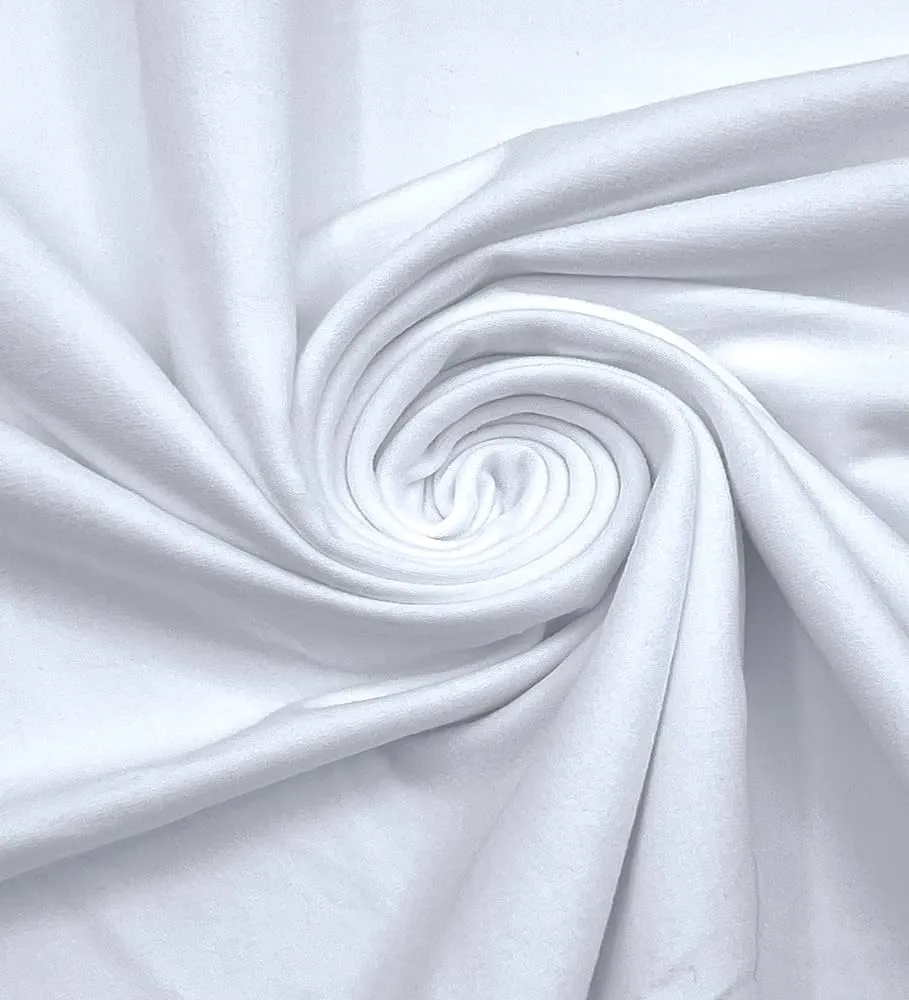Why does spandex fabric need to be pre-shaped? The maximum temperature cannot exceed 195°
The main characteristics of spandex fabrics are:
1. Spandex has very high elasticity. Generally, products do not use 100% polyurethane. Most of them are mixed with 5~30% in the fabric. The various spandex fabrics obtained have 15%~45% comfortable elasticity.
2. Spandex fabrics are often made of composite yarns, that is, spandex is used as the core and other fibers (such as nylon, polyester, etc.) are used as the skin layer to make core-spun yarn elastic fabrics. It has good adaptability to the body and is very suitable for tights without oppression.
3. The appearance style and wearing performance of spandex elastic fabrics are similar to similar products covered with outer fiber fabrics.

In order to improve the running performance of spandex during spinning, silicone oil lubricants and other auxiliaries are used in the weaving process. These additives degrade naturally over time resulting in yellowing of the fibers and decreased elasticity of the fabric. At the same time, spandex fabrics in long-term storage will form a "cold set", so that the fabric can not be eliminated in the post-processing of permanent wrinkles. Therefore, in addition to reducing storage time, the spandex knitted fabric is more important to open the open width immediately after weaving to avoid the opportunity of creasing.
The knitted fabric containing spandex has certain internal stress formed during weaving in the inner spandex of the fibers after unloading the machine. Therefore, the purpose of preheating and shaping is to eliminate stress through the process of fabric one by one, so that the size of the fabric is fully stable, and permanent creases in the post-processing of the fabric are eliminated. If the coil formed when the cylinder is woven, the second coil is on the left side of the first coil, then the direction of the cloth should also be 7% to 10% (relative width) on the left side of the predetermined shape, so that the twist of the finished product is consistent.

Pre-setting
Therefore, the best pre-setting solution is:
Relaxation → Steaming (80℃ hot water without steaming conditions) → Overfeed pre-setting → (enter fabric pre-treatment → setting → printing).
Most dyeing factories do not have steaming equipment and directly press water to set. When the temperature is below 10 degrees (winter), creases are easy to appear on the fabric. The fabric will be set after being relaxed in the steam box, which will achieve satisfactory results. The heat setting temperature is preferably between 185 and 190℃, and the setting time is 45 to 60 seconds. If the setting temperature is too high, the fabric will turn yellow.
At the same time, if the impurities and auxiliaries on the fabric are partially degraded due to the influence of baking, once the degraded substances migrate to the inside of the fiber to produce marks, these marks will be difficult to remove in the subsequent processing. When dyeing, the oil spots inside the fiber will first absorb the dye, and they will not be able to escape in time during the heat preservation and dyeing process, forming dark spots. Even if the color is stripped and re-dyed, it will remain on the fabric. Therefore, high-temperature pre-forming above 195°C (Platform Jun Note: The softening temperature of spandex is about 200° or more), which will also affect the spandex fastness. The width of the fabric during shaping is 10% to 15% wider than the blank fabric, so that it can have a sufficient recovery during pre-treatment in the dyeing tank, so that the stress inside the fabric is completely eliminated.
Pre-treatment
The knitted fabric to be printed must also be pre-treated to remove cotton stains, impurities, grease, wax, etc., increase the whiteness of the fabric and improve the wetting and water absorption properties of the fabric, so as to achieve a good printing effect. Pretreatment processes can be divided into two categories, namely traditional alkali treatment and modern bio-enzyme treatment. Bio-enzyme treatment meets the requirements of environmental protection processing, but it is difficult to meet the requirements of fabrics with high whitening or bleaching requirements at present, so conventional alkali treatment processes are still widely used. It is very necessary to gradually cool down the water washing of spandex fabrics after pretreatment to prevent sudden cooling from causing fiber shrinkage and creases.
Shaping requirements for semi-finished products
The shaping of semi-finished products must be carried out according to the original design process. Generally speaking, the shaping width is about 3% to 5% wider than the finished width, and the warp shrinkage is controlled within the shrinkage required by the finished product. The elongation of the patch is equal to the enlargement ratio during the tracing. If it is a single-sided knitted fabric, it is also necessary to control the paddle cutting edge and the optimal twist to reduce the printing weft caused by twist. The width of the pulp edge is about 1 cm, and the pulp is broken. It should not be too thin or too thick. Too thin will not play the role it should play, and too thick will affect the printing effect near the edge of the cloth. Pigment printing will increase the weight per square meter of the fabric due to the solid slurry remaining on the surface of the fabric. Therefore, under the conditions of suitable width and shrinkage, the weight per square meter can be lighter.
-
Hebei Niuyuan Technology Co., Ltd.: Your Trusted Partner in Sustainable Textile MaterialsNewsJun.27,2025
-
Using Vertical Cotton Stripe Fabric to Flatter Body ShapeNewsJun.05,2025
-
Reinforced Coat Pocket Types in WorkwearNewsJun.05,2025
-
Importance of a Durable Pants Pocket LinerNewsJun.05,2025
-
How 88 Percent Polyester 12 Percent Spandex Performs After 50 WashesNewsJun.05,2025
-
Cotton Suit Fabric vs. Satin LiningsNewsJun.05,2025
-
Cotton Shirt for Men with Printed Finish: Do’s and Don’tsNewsJun.05,2025











